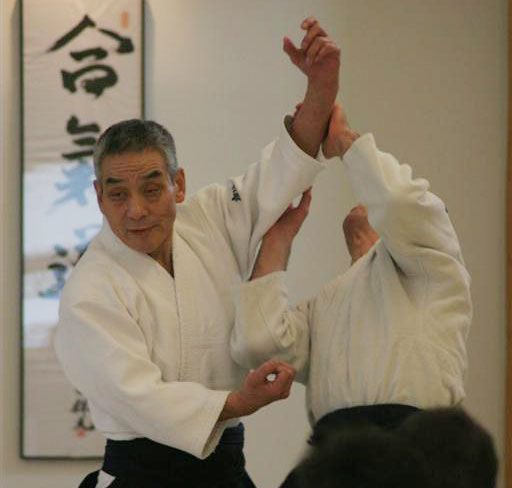
Hiroshi Kato Sensei (1935-2012)
Hiroshi Kato was born in Tokyo on March 24th 1935, and entered Aikikai Hombu Dojo in 1954 at the age of 18.
In 1975 he formed an informal practice group at the Suginami Ward Koenji Gymnasium near his home, and in April 1987 he established the Suginami Aikikai (杉並合気会) dojo in the Suginami Ward of Tokyo, Japan as a branch dojo of the Aikikai Foundation.
This is the first part of a two part interview with Hiroshi Kato that originally appeared in the April 2007 issue of Gekkan Hiden (月刊秘伝 / “Secret Teachings Monthly”), a well known martial arts magazine in Japan.
This interview was also published in a collection of interviews with students of the Founder published in Japanese as 開祖の横顔 (“Profiles of the Founder”) in 2009. There was a short introduction to this work in the article “Morihei Ueshiba – Profiles of the Founder“. A number of English translations of interviews from that collection appeared have appeared previously – Nobuyoshi Tamura Sensei (Part 1 | Part 2), Hiroshi Isoyama Sensei (Part 1 | Part 2), Shigenobu Okumura Sensei (Part 1 | Part 2), Nobuyuki Watanabe Sensei (Part 1 | Part 2), Masatake Fujita Sensei (Part 1 | Part 2) , Yoshimitsu Yamada Sensei (Part 1 | Part 2) and Kanshu Sunadomari (Part 1 | Part 2).
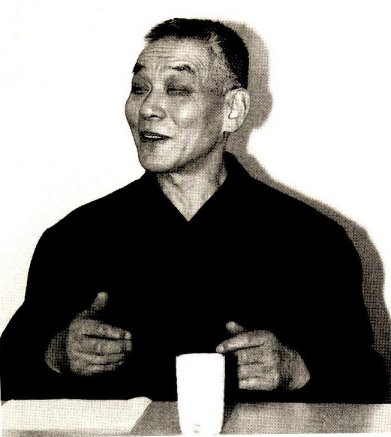 Hiroshi Kato – Aikido Tankyu (合気道探求) #28
Hiroshi Kato – Aikido Tankyu (合気道探求) #28
Interview with Aikido Shihan Hiroshi Kato – Part 1
When we first met I had a premonition that I would continue for the rest of my life.
Q: What was your impression first meeting the Founder?
A: I thought, “There are really people like this in the world? Wonderful!”. Somehow I thought “I’ll continue this for the rest of my life…” – and even now I am still continuing. (laughing)
Q: It was that intense?
A: What he was doing was incredible, but it was also that the atmosphere was incredible. That’s important, you know. Because he was the first person like that.
Q: What did the atmosphere of the dojo feel like at that time?
A: Well, it was full of strange people. (laughing) That’s because it was the time when, first of all, people thought “I want to become strong”. Actually, most of the people were Yudansha in Karate, Judo or Kendo, and were already strong before they even began. (laughing) So of course, the training was severe.
Q: Wasn’t it a struggle for you without any special experience in Budo?
A: It wasn’t difficult. It was just training, so it’s not as if they were coming to fight with you. Fortunately, I had a lot of horsepower. That is, if you didn’t have physical power you wouldn’t have been able to make it. (laughing) There were also some folks who would suddenly try to apply a leg sweep on you. (laughing) But if one takes the falls honestly every day then they will be able to react when someone goes beyond the principle being trained. When I think of it now it seems as if everybody was quite violent. (laughing) But in the end it was because I was able to train with so many of those people that my body was able to remember those things.
Q: Did you do any basic physical strength training?
A: Not at the dojo, but I always did that kind of thing at home or in other places. That was a time when there were still very few sports clubs, but there were some of the sempai who lifted barbells. Well, even if it wasn’t barbells then everybody was doing something like that. If you didn’t then you wouldn’t be able to keep up with the training.
Q: What kind of things did you do?
A: I took a lot of ukemi. I would do mae-ukemi several hundred times in the dojo when nobody was there, walk around the dojo ten times in shikko, I did a lot of things like that. Additionally, I would do things like swing a log around or do cuts with a bokken. I did Karate striking as well, on a makiwara that I made myself. I never did Karate, but if one didn’t do that kind of thing than it would be done to them. While practicing striking oneself one comes to understand the feelings of an opponent who is coming to strike them.
Q: What had the greatest influence on your Aikido?
A: Number one was O-Sensei. I don’t have any image other than that. Other than that, I somehow remember training on my own, and the things that I practiced. I’m afraid that I have forgotten everything that was taught to me by my sempai. Though of course, they must have had an influence on me. However, the interesting thing about the Aikikai is that they don’t force you “do it like this”. For that reason the sensitivity to accept the good things while separating them from the bad is required. So everybody has individual characteristics. From the point of view of a spectator people are so different that they may think “are they really doing the same thing?”.
Q: Did they each do Aikido with a different feeling?
A: That’s because Aikido is something that feels different with each person. Then, everybody was really strong. Including me. (laughing) I think that’s why it was so difficult for Kisshomaru Sensei to put everything together. Everybody was just doing whatever they liked. (laughing) However, I think that was the reason why Aikido has become as large as it has. If a strict framework had been set “this is Aikido” then the sense of its value would have become much narrower. I think that there is also a strength in having a variety of different kinds of people.
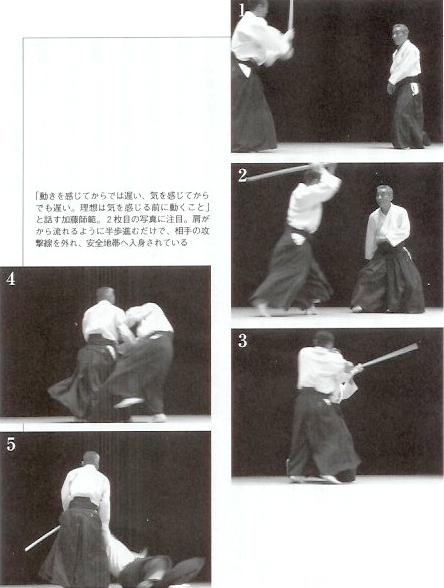
Hiroshi Kato Sensei demonstrating tachi-dori
“After sensing the movement is too slow, even after sensing their Ki is too late. The ideal is to move before one senses their Ki.”
The necessity for spiritual training.
Q: Looking back, do you see many changes in your Aikido?
A: There was a big change after I turned thirty, when I injured my back. I made a mistake in my method of training.
Q: What was your mistake?
A: The use of my lower body. Up until that time I would use my momentum to bounce, that was no good. In the end, I thought that (Aikido was) “not techniques for conflict, for defeating other people”, and I changed. However, I had a difficult time after that. Because I didn’t understand what to do, you know.
Q: It was completely different from what you had done up until that time?
A: It was different. One changes their feelings. There are those who can do it in an instant and those for whom it may take years – it took me quite some time.
Q: Until that time you were moving with explosive force (瞬発力)?
A: That’s right. But there is a hitch in that kind of movement. If something happens you will be done for. Make no mistake.
Q: What was the new principle, or movement, from that time?
A: The use of the lower body itself is not a mistake. However, the way in which you use it, the balance of stillness and motion there, the problem of the internal aspects, and the consciousness… Originally my movement was much faster. Rather then saying muscle, it was the speed of physical force (魄力). O-Sensei often told me “it’s not the body (魄), it’s the mind (魂)”. But I was stupid and I didn’t listen. (laughing)
Q: It’s difficult to understand that when your body is moving, isn’t it?
A: Yes, you can’t understand it. When I became unable to move my body I thought “Ah, so that’s it!”. That’s not a principle, it’s something inside one’s body that they understand instinctively. If it doesn’t occur naturally in your training than perhaps that hitch will be created in your movement. When there is a hitch then a rhythm will be created, and if one tries to take their distance they will be done for. Because that kind of person will soon be cut down. That is why it is said “begin Aikido from the void”. Then I just kept thinking of things like “if it’s not the movement of the body (魄), how can one become one with the opponent?” – that had the opposite effect of making me unable to move my body, and I really fell into a slump.
Q: A slump?
A: I don’t know how long I failed. I just thought that someday I would understand and kept on doing it, no matter whether people were laughing at me or not.
Q: Was it painful?
A: I didn’t particularly feel that it was painful. If it’s something you can’t do then it just can’t be helped. Because I’m just “ordinary”. (laughing) But it is because I am a person that has put in the time to build themselves up that now there are times that I can say “don’t do that”. Surprisingly, it is because those with talent can do those things naturally that they don’t understand.
Q: What did you do to increase your sense of the internal aspects?
A: Swinging a bokken all night, sitting with my mouth wide open in a daze, walking on the mountainside… I walked as much as 60 kilometers in a single night!
Q: Why did you do those kinds of things?
A: In order to forget myself. The Japanese method of “gyo” (“spiritual training” / 行) is to throw away everything that one has. In order to to unify all of your physical aspects it is necessary to do some amount of “gyo”.
Q: Why did you believe that to be necessary?
A: It wasn’t that I did it because I decided to do it, I did it because there wasn’t anything else that I could do. When one thinks “if I do this then I will improve” then they will always fail. However, in the midst of my nights swinging the bokken I would often be surprised by sudden insights. If one tries to think of it first it just won’t work.
Q: What changed as result of those practices?
A: I became calmer, I really did. I think that my technique also changed. My technique has also changed recently. If one doesn’t change as they get older they will end up failing. Also, those people who think that they are able to do it will end up failing. It’s because one thinks that they can’t do it yet that they are able to innovate, that they are able to change.
Q: What do you feel is your ideal Aikido?
A: In the end, naturalness is number one, I think that it begins when one empties their mind and their body moves naturally.
Q: Is it impossible to reach that state without some kind of spiritual training (“gyo”)?
A: Well, one could call it spiritual training, or that if one swings a bokken that they swing it with full intensity. It’s necessary to push through with full intensity. Even if one swings a bokken, if one has the feeling of trying to swing it strongly with their arms it absolutely won’t do any good. As with everything else, when one practices thinking “I’ve understood it, I’ve realized it” then it won’t work. (laughing) I myself repeated that many times.
Q: When did you begin to change?
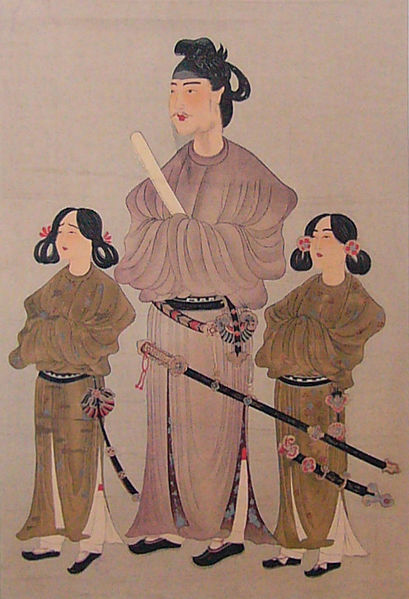
Prince Shotoku – eighth century woodblock print
A: In the end, it’s no good to think about defeating other people, one must think “let’s practice in a joyful manner”. That’s because once one thinks about defeating the other person it shows in their stance. That’s the same as “Harmony is to be valued” (Translator’s Note: 和を似て尊しとなす – from the Seventeen-Article Constitution set forth by Prince Shotoku in the 7th century, in which he stressed the primary importance of harmony in social relations).
Q: When you say harmony is seems like an idealistic ethical theory, is this also a necessary element of Aikido in the technical sense?
A: Those ethics are necessary. It is from them the distance between us disappears, one is able to move, and technique appears. But it’s not easy. As you might think, it’s important not to become angry when the come at you. (laughing)
Q: Is that harmony an instantaneous thing?
A: Rather than saying in an instant, it’s that one must change the way that they stand. At the moment one stands one must envelope the opponent. That is something that O-Sensei had. I felt it. If one suppresses their desires and discards themselves, they will become free, won’t they? Without that part one will always be consigned to the world of warfare. The reason why there are no competitions in Aikido is that “if you want make your life so that such things are not necessary you can do it”. Perhaps if this continues to spread than the world will become at peace.
Hiroshi Kato Sensei demonstrates morote-dori
“It is the responsibility of those people who have taken the hand of O-Sensei to show that Aikido is a wonderful thing.”
Q: That must require a high level of consciousness from those training, doesn’t it?
A: I think so. For that reason our methodology is to train in a single flow, each person taking ukemi for the other. However, the most frightening thing about this kind of training is to be carried away by the imagery. I would like everybody to be aware that we are “doing something even stricter than contests”.
Published by: Christopher Li – Honolulu, HI

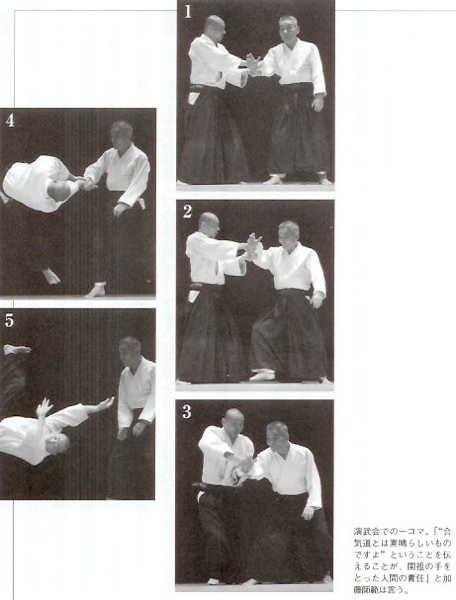


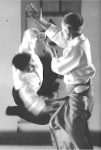
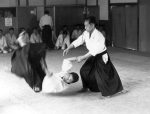
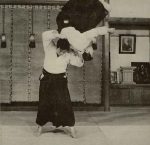

Leave a Reply